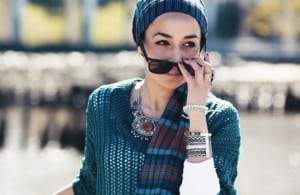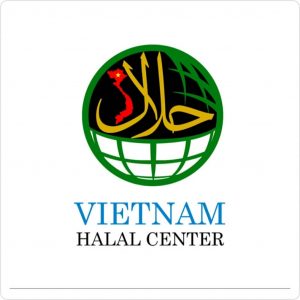Socio-economic and political developments, aided by the connectivity of the Internet, have galvanised a newly emergent Muslim consumer demographic, creating significant, if complex, opportunities for international fashion brands.

LONDON, United Kingdom — Muslim fashion. Simply juxtaposing these two words can cause consternation in some circles. Interpretations of a Koranic verse (an-Nur chapter 24, verse 30) advocating modesty and espousing appropriate female attire (enforced by law in some countries) have long restricted what many Muslim women can wear, distancing them from Western fashion culture. But, today, experts say, things are changing and increasing numbers of Muslim women want to dress fashionably and express their individuality through clothing.
The shift is being driven, in part, by significant demographic trends in the Muslim world. “There are varying estimates of the Muslim population, but what we use is 1.8 billion, of which about 43 percent, so just shy of 800 million, are under 25,” said Shelina Janmohamed, vice president of Ogilvy Noor, an Islamic branding practice that’s part of global marketing and public relations giant Ogilvy & Mather. “Muslims under 25 make up approximately 11 percent of the global population. Thus, not only do you have more Muslims to target, but they are increasing in numbers faster and they are young. And, contrary to a lot of expectations, they are interested in brands and they are interested in asserting some kind of individuality through what they purchase.”
“For Western labels, and fast fashion retailers particularly, the opportunity lies in the fact that their consumer base will grow exponentially over the next few years,” said HRH Princess Reema Bint Bandar Al Saud, chief executive of Alfa International, a luxury retail corporation based in Saudi Arabia which, among other activities, operates the Harvey Nichols store in Riyadh. Rising employment amongst Muslim women is also driving change. “As young ladies enter the work force they will obviously be earning their own money. Spending an allowance from your father or husband has a very different feeling than spending money you have earned. You can imagine that accessories would also be a good strategic focus for brands.”
“In Saudi [Arabia] our ladies have always altered current fashion trends to suit their modesty needs when not in the Kingdom [of Saudi Arabia]. They are masters of layering. Within the Kingdom, because we wear the abayah in public, the biggest change has been seen in the styles, material and the colour options,” she continued. “Historically, the abayah has been plain black. Today, it is in many colours, materials and embellishments, allowing the individual to make their personal fashion sensibilities known publicly to those who cannot see the brand names worn under the abayah. The article of clothing that was meant to be your unifier has become your identifier or differentiator.”
“It is part of a bigger social movement in terms of the empowerment of women within the Muslim community,” added Sarah Elenany, a British Muslim designer who caters to the modest fashion market and launched her streetwear-influenced label in 2009. “It might be because of the other revolutions that are happening around the world, it may be a natural evolution, but women are starting to say, ‘How do I dress myself for the modern world?’”
“There has been a change,” said Reina Lewis, professor of cultural studies at The London College of Fashion and editor of Modest Fashion: Styling Bodies, Mediating Faith. “Women who are Muslim have been dressing fashionably, in different ways, for a very long time. But, I think what we are seeing now — and what the market is beginning to be interested in — is the commercial development of self-consciously Muslim or Islamic fashion.”
“After 9/11, young Muslims, especially in the West, found it was their role and their responsibility to take some pride in their faith and I think that is when we started to see the emergence of, today, what we might call Muslim fashion,” said Janmohamed.
Muslim fashion is by no means uniform, however. Followers of Islam are spread across the globe from Jakarta to Alaska and the influence of local climates, cultures and doctrinal interpretations has a huge impact on the way people dress. “If you live in a city like London or Paris, you will see a lot of women from the Gulf wearing an abayah or a jilbab, however, around the wider world there is a huge amount of variation,” noted Janmohamed. “If you were to go to India, or Indonesia, the most populous Islamic state, they have such a wildly different perspective on how people should dress. They use great colours, fantastic patterns and the fabrics are vastly different.”
But despite the complexities of catering to such a large and varied market, the increasing desire for individual identity and the emergence of greater fashion consciousness in Muslim communities — especially amongst the young and connected — is irrefutable.
“This young generation have grown up within the neo-liberal global consumer culture,” said Professor Lewis. “They want to express and articulate various parts of themselves through their participation with global consumer culture: fashion, media, music and so on. This is the way that they are doing it, it is really important that there is this international circulation of image through the blogs, like Hijab Style. It is a form of contemporary Islamic expression that is about the now and about this moment.”
“What is interesting to note is the proliferation of online websites, things that are based in the UK and the US, which are starting from the ground up. Muslim women saying I can’t find what I need to wear out in the marketplace, so I am going to invent it myself. That is particularly where a lot of Western [Muslim] fashion has come from. The Internet has allowed a niche market in modest fashion to develop, because it reduces your overhead and widens your reach. But a lot of these companies are quite small in terms of their production and turnover,” Professor Lewis continued. Indeed, the popularity of blogs such as Hijab Style, which has a following of 484,000 on Facebook, has yet to translate commercially.
“Early bloggers like Jana Kassaibati of Hijab Style told me that she started it as there was nothing there for Muslim women who wanted to find a way to dress — young women like her,” said Lewis. “If you listen to Muslim women talking in the West, H&M, Primark and Zara are typically the names that come up over and over again. They will say that their clothes are most suited to being Muslim friendly.”
“The wider western fashion market has really been quite slow to get its head round the opportunity Muslim consumers represent,” said Janmohamed. “The Muslim population is young and growing and it is completely untapped. Nobody is really reaching out to them with the kind of communication or product innovation that they are really screaming out for. I find it very interesting that it is much smaller brands and start-up entrepreneurs that are grabbing this opportunity. If you’re a fashion brand and you decided that there was one hundred billion dollars in this for you, you can start from scratch and figure out how to be fashion forward within a different kind of parameter.”
“Today it is received wisdom that there is a Hispanic market that you reach out to. Fifteen years ago this was a wildly innovative concept. I think the idea of the Muslim market is very similar to that.”
Lewis agreed: “It is very interesting that a market for Islamic or Muslim branding absolutely mirrors that wake up to ethnic marketing and branding experienced in America. Of course, Islam as a religion is not an ethnicity; it is multi-ethnic. But it is quasi-ethnic in the way that people might experience it. Now, in America they would talk not just of a Hispanic market, but a Cuban market, a Latina market…”
“There is a growing acknowledgement that this is a target group that has yet to be engaged with,” said Janmohamed. “The simple answer is that those buying for fashion companies probably just haven’t realised how big an opportunity this is.”



